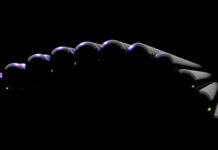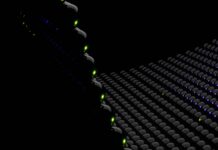Halftone, a fundamental and ingenious technique in the realm of printing and image reproduction, has played an instrumental role in shaping the way we perceive and reproduce images. Employed to transform continuous tone images into patterns of dots, Halftone is a pivotal method that bridges the gap between the analog and digital worlds, enabling the accurate reproduction of images through various printing processes. This intricate process, known as Halftone, involves breaking down a continuous tone image into a matrix of dots, which, when viewed at a distance, create the illusion of smooth gradients and varying tones. This technique has revolutionized the world of printing, allowing us to transfer images from the digital domain onto physical surfaces with remarkable precision and detail.
In essence, Halftone serves as a translator between the analog and digital representations of images. In the early days of printing, reproducing photographs and images with accurate tonal variations was a monumental challenge. Traditional printing methods, such as letterpress and lithography, were ill-equipped to capture the subtleties of continuous tone images like photographs. Enter Halftone, a groundbreaking solution that broke down images into a series of tiny dots, varying in size and spacing according to the tonal values they aimed to represent. By strategically arranging these dots, Halftone effectively mimicked the appearance of smooth gradients and intricate shades, fooling the human eye into perceiving a continuous range of tones.
The Halftone process involves several critical steps that collectively contribute to the creation of printed images with accurate tonal reproduction. Initially, the continuous tone image is analyzed to identify the various tonal values present. This image is then converted into a matrix of dots, with each dot’s size and density determined by the corresponding area’s tonal value. Regions with darker tones feature larger and denser clusters of dots, while lighter areas consist of smaller, sparser dots. This variation in dot size and density is what allows Halftone to simulate the full spectrum of tones in the original image.
The actual creation of Halftone images involves various methods, each with its own unique approach to translating continuous tone into dot patterns. The most common technique, used extensively in newspaper and magazine printing, is the amplitude modulation (AM) method. In AM Halftone, dots are spaced at a fixed frequency, and their size varies to represent tonal values. On the other hand, frequency modulation (FM) Halftone, often referred to as stochastic or dispersed-dot Halftone, employs a fixed dot size but varies the spacing between dots. This results in a more even distribution of dots, which, when viewed at a distance, create the illusion of continuous tones. The FM method is often preferred for high-quality printing, such as art books and photography portfolios.
Halftone’s significance transcends traditional print media and extends to the digital realm. With the rise of digital displays, the principles of Halftone have been adapted to simulate continuous tones on screens. Even though screens can display a wide range of colors and tones directly, the concept of Halftone has been applied creatively to mimic traditional printing aesthetics. Digital designers often use techniques like dithering, which employs patterns of pixels to simulate varying tones on screens. These patterns, similar to Halftone dots, trick the eye into perceiving smoother gradients and more intricate details than the screen’s native capabilities would allow.
Halftone also holds cultural and artistic significance. Artists and designers have embraced Halftone as a stylistic choice, using its distinct dot patterns to add texture and visual interest to their creations. Comic books, for instance, have a long history of utilizing Halftone to create shading and depth, giving characters and scenes a unique visual appeal. This intentional incorporation of Halftone’s aesthetics demonstrates its enduring influence on visual arts and popular culture.
Halftone stands as an indispensable technique that has transformed the landscape of printing, image reproduction, and visual arts. Its innovative approach to breaking down continuous tone images into patterns of dots has enabled us to faithfully replicate images on various physical and digital surfaces. The process’s evolution from traditional printing methods to digital screens showcases its adaptability and continued relevance. With its ability to capture the essence of continuous tones, Halftone remains an essential tool for anyone involved in the realms of design, printing, and artistic expression.
Halftone’s impact on the printing industry cannot be overstated. Prior to its invention, the reproduction of images in print was a painstaking and often inaccurate endeavor. The absence of a reliable method to translate the complex tonal variations of photographs and illustrations onto paper limited the potential of print media. Halftone revolutionized this process by providing a systematic approach to convert continuous tone images into printable patterns of dots. This breakthrough democratized the printing industry, allowing mass production of images with unprecedented fidelity. Newspapers, magazines, books, and other printed materials suddenly had the power to include high-quality images that conveyed depth, detail, and visual richness.
The successful execution of Halftone relies on a delicate balance between dot size, density, and spacing. Achieving the desired tonal accuracy demands careful consideration of these factors. Too few dots, and the image appears washed out, lacking in contrast and detail; too many dots, and the image can become too dark and lose subtlety. Printers and image processors must employ their expertise to determine the optimal parameters for each image, taking into account the specific characteristics of the printing process, such as the type of ink, paper, and printing machinery being used.
Halftone’s influence extends far beyond traditional printing applications. In the realm of photography, the technique plays a pivotal role in the reproduction of photographs in books, magazines, and galleries. Photographers and curators collaborate closely with printers to ensure that the nuances of the original photographs are faithfully represented in the printed form. Halftone’s ability to faithfully reproduce images in print is particularly valuable in fields such as art books, where preserving the artist’s intent is paramount.
Furthermore, Halftone has made a profound impact on the world of graphic design. Designers harness the visual power of Halftone patterns to add depth, texture, and a touch of nostalgia to their creations. By intentionally incorporating Halftone aesthetics, designers can evoke a sense of vintage charm or emulate the look of old comics and newspapers. This intentional use of Halftone as a design element adds layers of meaning and visual interest to various forms of media, from posters and advertisements to packaging and websites.
As technology advances, Halftone continues to evolve alongside it. Digital printing technologies and software have expanded the possibilities of Halftone, enabling more precise control over dot size, shape, and placement. This has led to improvements in the accuracy and quality of printed images, allowing for finer details and smoother gradients. Additionally, the integration of Halftone-like techniques into image editing software empowers photographers and designers to manipulate images in creative ways, enhancing their visual impact.
In the digital realm, Halftone has found new life in the form of digital art and online media. Artists working in digital mediums have adapted Halftone aesthetics to create unique and visually striking pieces. Online publications and platforms use Halftone-inspired designs to evoke a sense of nostalgia or to establish a particular visual identity. This convergence of traditional printing techniques and digital innovation underscores Halftone’s enduring relevance in an ever-evolving visual landscape.
In summary, Halftone stands as a transformative technique that has shaped the way we perceive and reproduce images across various media. From its early origins in traditional printing to its modern applications in digital art and design, Halftone’s ability to capture the essence of continuous tones has left an indelible mark on the worlds of printing, photography, graphic design, and visual arts. Its legacy continues to inspire creativity and innovation, reminding us of the profound impact that a seemingly simple technique can have on the way we communicate and express ourselves visually.


















